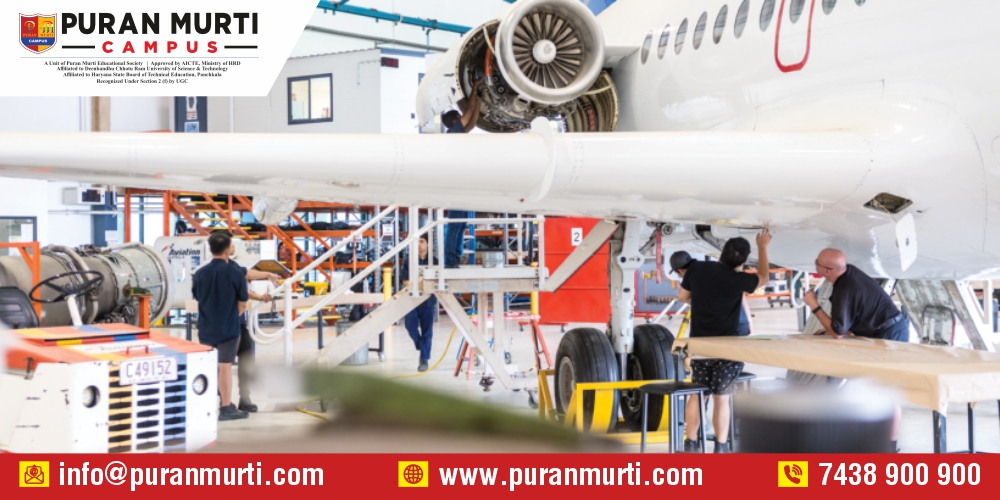How Long Does It Take to Become an Aircraft Maintenance Engineer?
Posted on : 30 July, 2024 3:37 pm
Becoming an Aircraft Maintenance Engineer typically takes about three to five years. This timeframe includes completing a diploma or degree in Aircraft Maintenance Engineering, which usually lasts two to three years. Additionally, aspiring engineers must gain practical experience through internships or apprenticeships, which can take another one to two years. Certification from a recognized aviation authority, such as the FAA or EASA, is also required and may involve further examinations and training. This comprehensive process ensures that Aircraft Maintenance Engineers are well-prepared to maintain and ensure the safety of aircraft.
Page Contents
ToggleEducational Requirements
To become an Aircraft Maintenance Engineer, one must complete a diploma or degree in Aircraft Maintenance Engineering. These programs typically last two to three years and cover essential subjects such as aviation safety, aircraft systems, and maintenance practices. Accredited institutions offer these courses, providing foundational knowledge and technical skills necessary for the field. The education also includes theoretical studies and practical workshops to ensure comprehensive training.
Educational Requirements:
- Diploma or Degree: Necessary qualifications.
- Duration: Typically two to three years.
- Subjects Covered: Aviation safety, aircraft systems, maintenance practices.
- Accredited Institutions: Ensure quality education.
- Foundational Knowledge: Essential theories.
- Technical Skills: Practical application.
- Theoretical Studies: In-depth understanding.
- Practical Workshops: Hands-on experience.
Practical Training
Practical training is a crucial component in becoming an Aircraft Maintenance Engineer, typically taking one to two years. It involves hands-on experience through internships or apprenticeships with certified maintenance organizations. Trainees work on actual aircraft, learning to troubleshoot, repair, and maintain various systems. This training ensures proficiency in using specialized tools and adhering to safety protocols, preparing candidates for real-world challenges in the aviation industry.
Practical Training:
- Duration: One to two years.
- Hands-On Experience: Working on actual aircraft.
- Internships: Practical exposure.
- Apprenticeships: In-depth training.
- Certified Organizations: Accredited training providers.
- Troubleshooting: Identifying and fixing issues.
- Specialized Tools: Proficiency in equipment use.
- Safety Protocols: Adherence to industry standards.
Certification Process
The certification process for Aircraft Maintenance Engineers is rigorous, requiring passing exams from recognized aviation authorities such as the FAA or EASA. Candidates must demonstrate their knowledge and practical skills through written and practical tests. This process also involves completing mandatory training hours and adhering to strict safety and maintenance standards. Certification ensures that engineers are qualified to maintain aircraft safely and effectively.
Certification Process:
- Examinations: Written and practical tests.
- Recognized Authorities: FAA or EASA.
- Knowledge Demonstration: Theoretical understanding.
- Practical Skills: Hands-on proficiency.
- Training Hours: Completion of required hours.
- Safety Standards: Adherence to protocols.
- Maintenance Standards: Compliance with regulations.
- Qualification Assurance: Ensures safety and effectiveness.
Alternative Pathways
Alternative pathways to becoming an Aircraft Maintenance Engineer include military training, which often provides accelerated, intensive courses. Some may opt for on-the-job training programs offered by airlines or maintenance companies. Online courses and certification programs offer flexibility and can complement formal education. Vocational schools also provide shorter, specialized courses. These pathways can offer quicker entry into the field, diverse learning experiences, and practical skills.
Alternative Pathways:
- Military Training: Accelerated, intensive courses.
- On-the-Job Training: Offered by airlines or maintenance companies.
- Online Courses: Flexible learning options.
- Certification Programs: Complement formal education.
- Vocational Schools: Shorter, specialized courses.
- Diverse Learning: Varied experiences.
- Practical Skills: Hands-on training.
- Quicker Entry: Faster route to the profession.
Career Preparation
Career preparation for Aircraft Maintenance Engineers involves a combination of education, practical training, and certification. Completing a diploma or degree provides foundational knowledge, while internships and apprenticeships offer hands-on experience. Certification from authorities like FAA or EASA validates skills. Continuous learning through workshops and additional courses enhances expertise. Networking with industry professionals and attending aviation events also play crucial roles in career readiness.
Career Preparation:
- Education: Diploma or degree.
- Practical Training: Internships and apprenticeships.
- Certification: FAA or EASA validation.
- Continuous Learning: Workshops and courses.
- Networking: Industry connections.
- Aviation Events: Exposure and opportunities.
- Foundational Knowledge: Core concepts.
- Hands-On Experience: Real-world skills.
In conclusion, becoming an Aircraft Maintenance Engineer requires a combination of education, practical training, and certification. The journey typically spans three to five years, encompassing formal education, hands-on experience, and rigorous certification processes. Alternative pathways, such as military training and on-the-job programs, offer diverse routes into the profession. Career preparation is enhanced through continuous learning, networking, and industry engagement. This comprehensive approach ensures that aspiring engineers are well-equipped with the necessary skills, knowledge, and experience to excel in maintaining and ensuring the safety of aircraft, making it a rewarding and essential career in the aviation industry.
Aircraft Maintenance Engineering

